丹後ちりめん 丹後織物工業組合
TANGO-CHIRIMENSILK FROM TANGO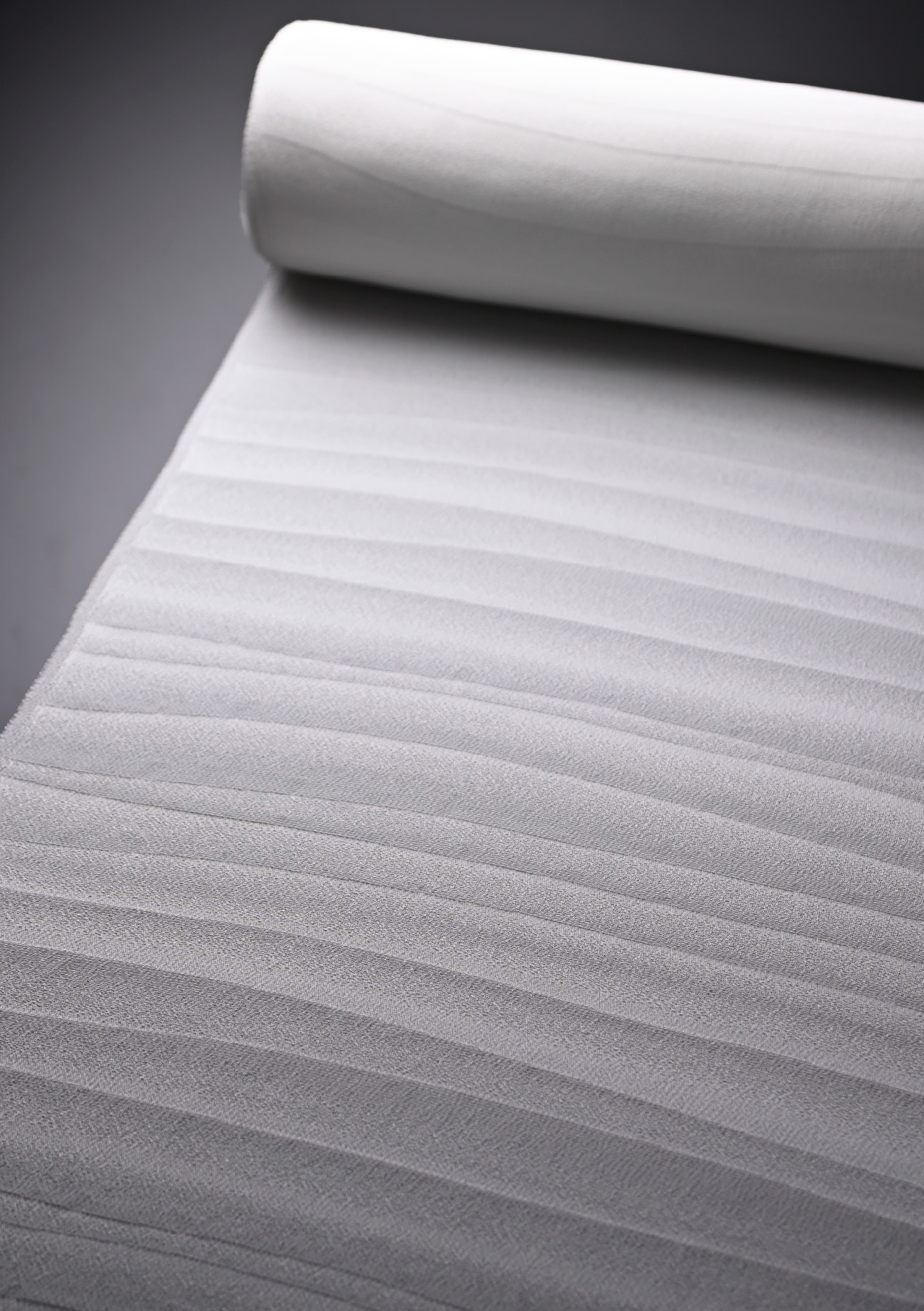 1
1
- 紋無地ちりめんの反物。
丹後ちりめんは、京都北部の丹後地方で生産される絹織物のこと。経糸に撚りのない生糸、緯糸に強い撚りをかけた生糸を交互に織り込むことで生地全体に出る細かなシボが特徴で、シワがよりにくく、しなやかで、凹凸が生み出す光の乱反射によって豊かで深みのある色合いが楽しめます。これは江戸時代(18世紀)に京都の織物の中心地である西陣の「ちりめん織り」から学び、独自に発展させた技法。以来、明治時代(19世紀)には、やはり西陣経由でフランス・リヨンにて発明された「ジャカード」を導入して紋織物の研究を進め、大正時代(20世紀)には、金糸・銀糸を織り込む縫取ちりめんを創案するなど、さまざまな取り組みを続けています。現在は、きもの地だけでなく、洋装用の布地を海外の老舗メゾンに供給したり、ネクタイやストールなどの服飾小物を生み出したりと、バラエティ豊かで上質な織物の産地として技術を守っています。
Tango-chirimen is a silk crepe fabric produced in the Tango region of northern Kyoto. Its characterized by a fine, bumpy grained texture achieved by alternately weaving the warp with raw, untwisted yarn and the weft with a highly twisted silk. This creates a fabric not only less prone to wrinkling, but also with a soft feel and a deep richness of color due to the irregular reflection of light on the uneven surface. This technique developed independently in the Edo period (18th century) by learning from "chirimen-ori" (silk crepe weaving) of Nishijin, then the center of textiles in Kyoto. In the Meiji era (19th century) modern techniques for creating crest fabrics were brought from Europe, including the use of the Jacquard loom from Lyon (via its previous use in Nishijin). In the Taishō era (20th century) gold and silver threads nuitori-chirimen were introduced. The traditional techniques have been carefully preserved to guarantee only the highest quality fabric. Alongside traditional kimono textiles, new uses are being explored, such Western clothing made by well-established fashion houses overseas, or for producing accessories such as ties and stoles, etc.
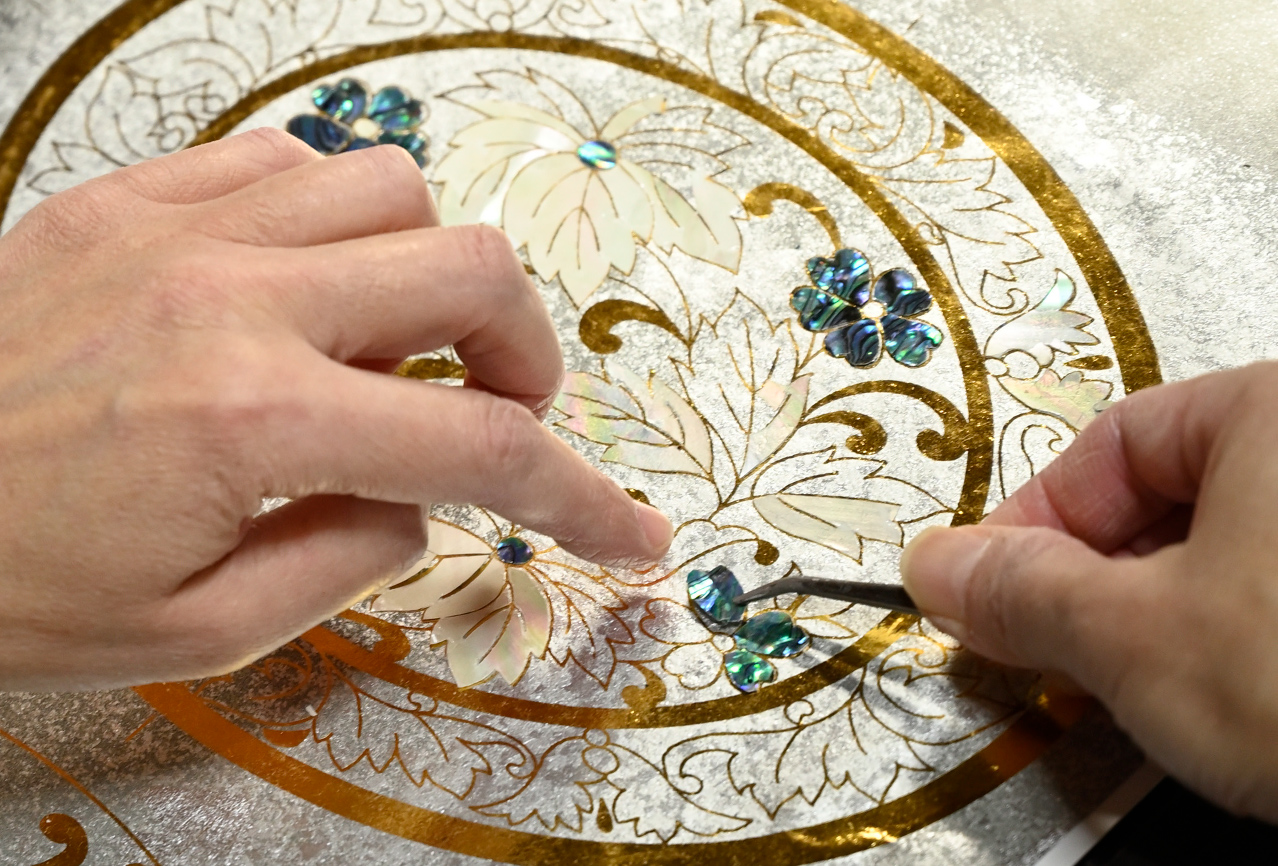 2
2
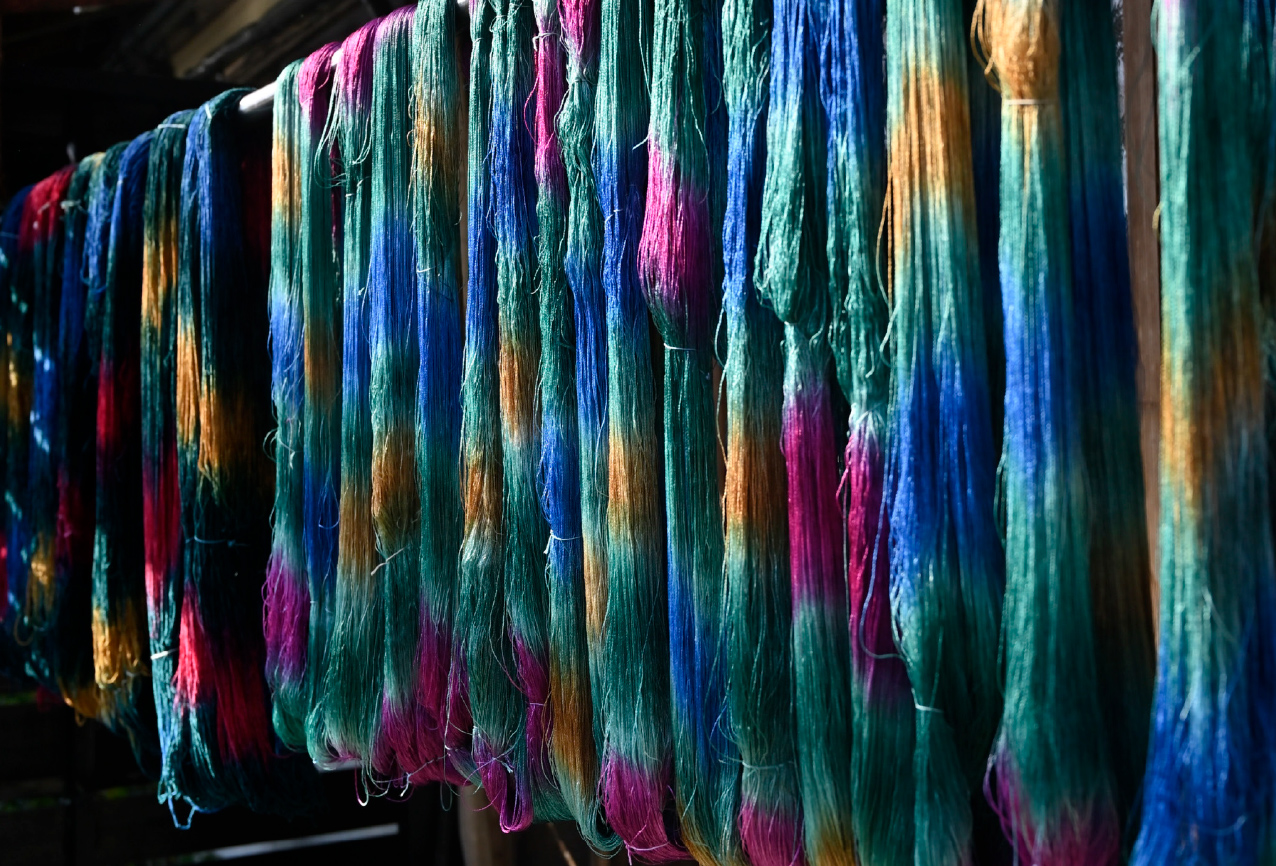 3
3
- : 引箔。下絵に沿って金箔や貝殻の薄片を貼り、小刀で糸状に細く切り、織り上げる。
- : 絣織用に染めた糸。
(1 田勇機業株式会社 / 2 民谷螺鈿株式会社 / 3 創作工房糸あそび)
1: A plain crest chirimen cloth. 2: Hikihaku, made by pasting gold leaf or seashell flakes along the sketch drawing, cutting into threads with a knife, then weaving. 3: Thread dyed for kasuri weaving. (1 Tayu / 2 Tamiya Raden / 3 creative workshop ITO ASOBI)
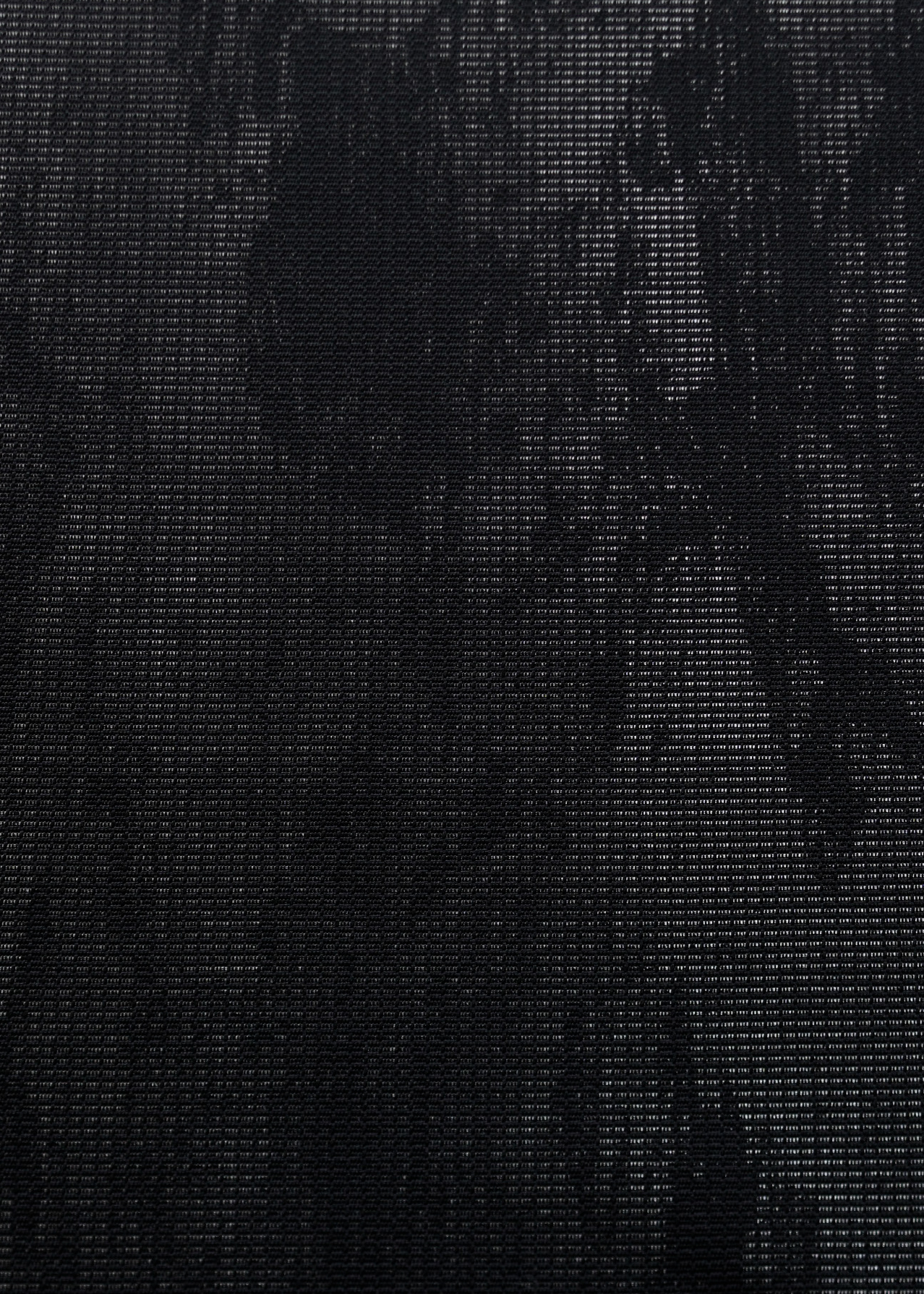 4
4
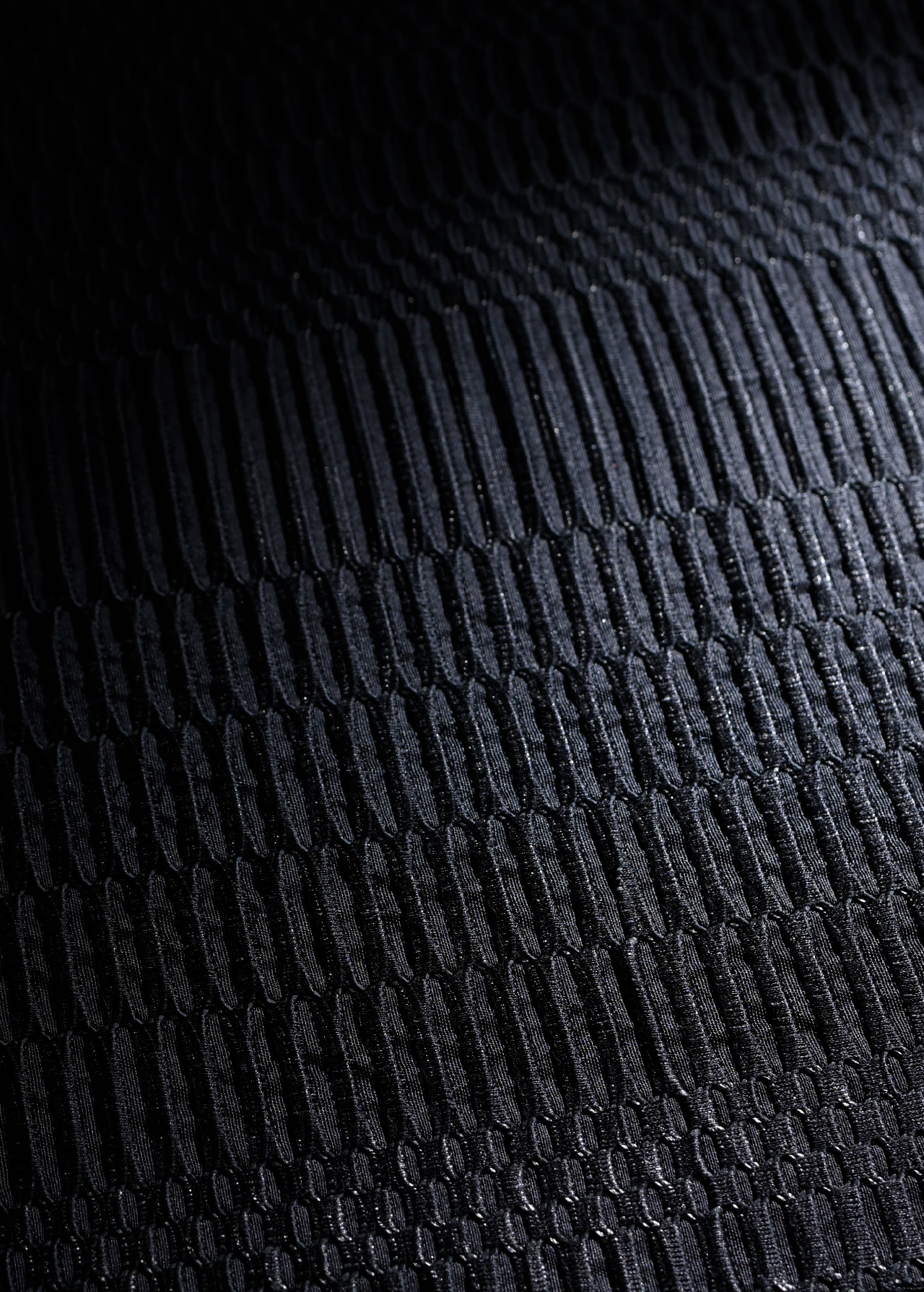 5
5
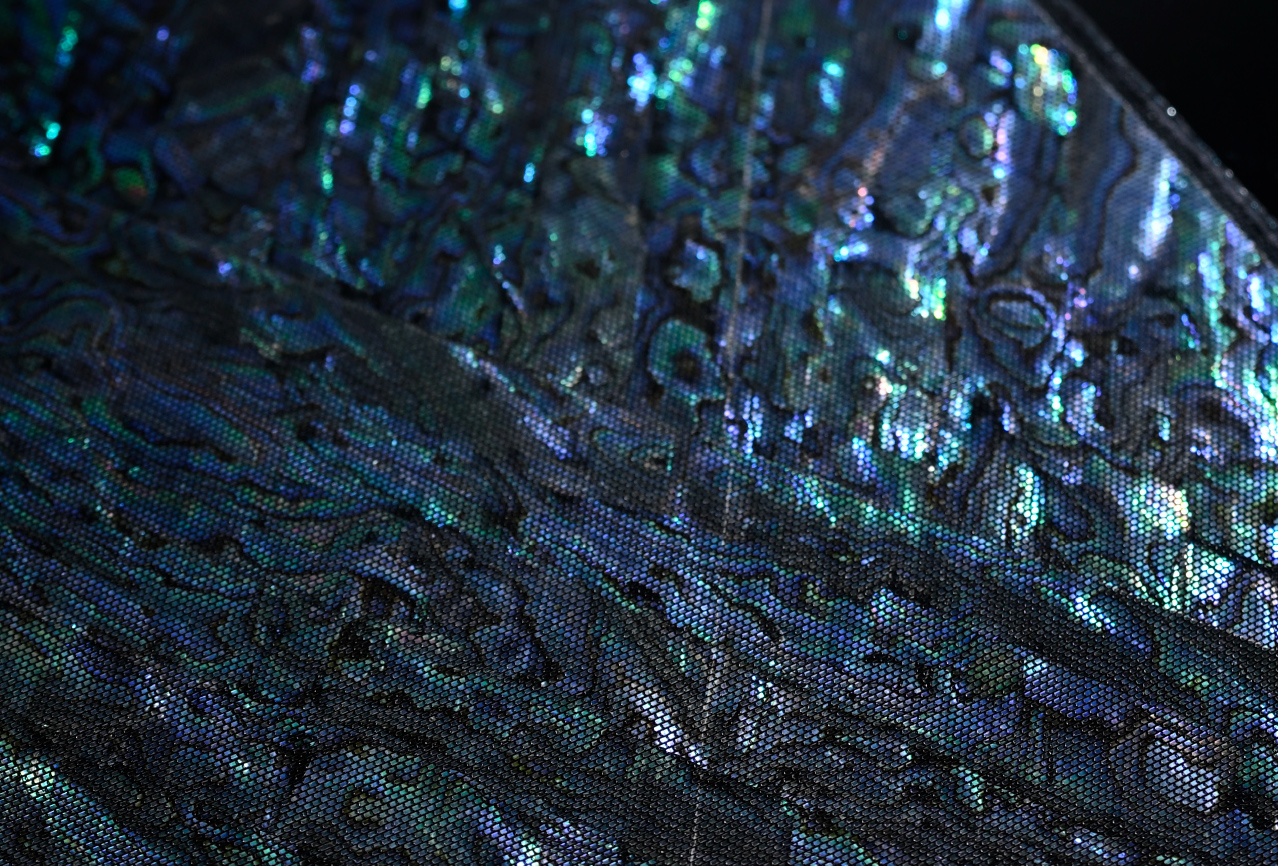 6
6
- : 和紙に銀を貼り付け硫黄で化学変化させたものを、裁断して織り込んだ生地。
- : 引き箔の手法でレザーを織り込んだ生地。
- : 同じく引き箔の手法を発展させ、漆の螺鈿細工で使用される夜光貝や白蝶貝、アワビなどの貝殻を織り上げた。
(4,5,6 すべて民谷螺鈿株式会社)
4: A fabric made by cutting and weaving silver onto paper, then chemically altered with sulfur. 5: Fabric woven with leather using a foil weaving technique. 6: Similarly, a method of weaving foil with shells was developed. Shells such as great green turban, white pearl oyster and abalone are decorated with raden lacquer work and woven. (4,5,6 Tamiya Raden)
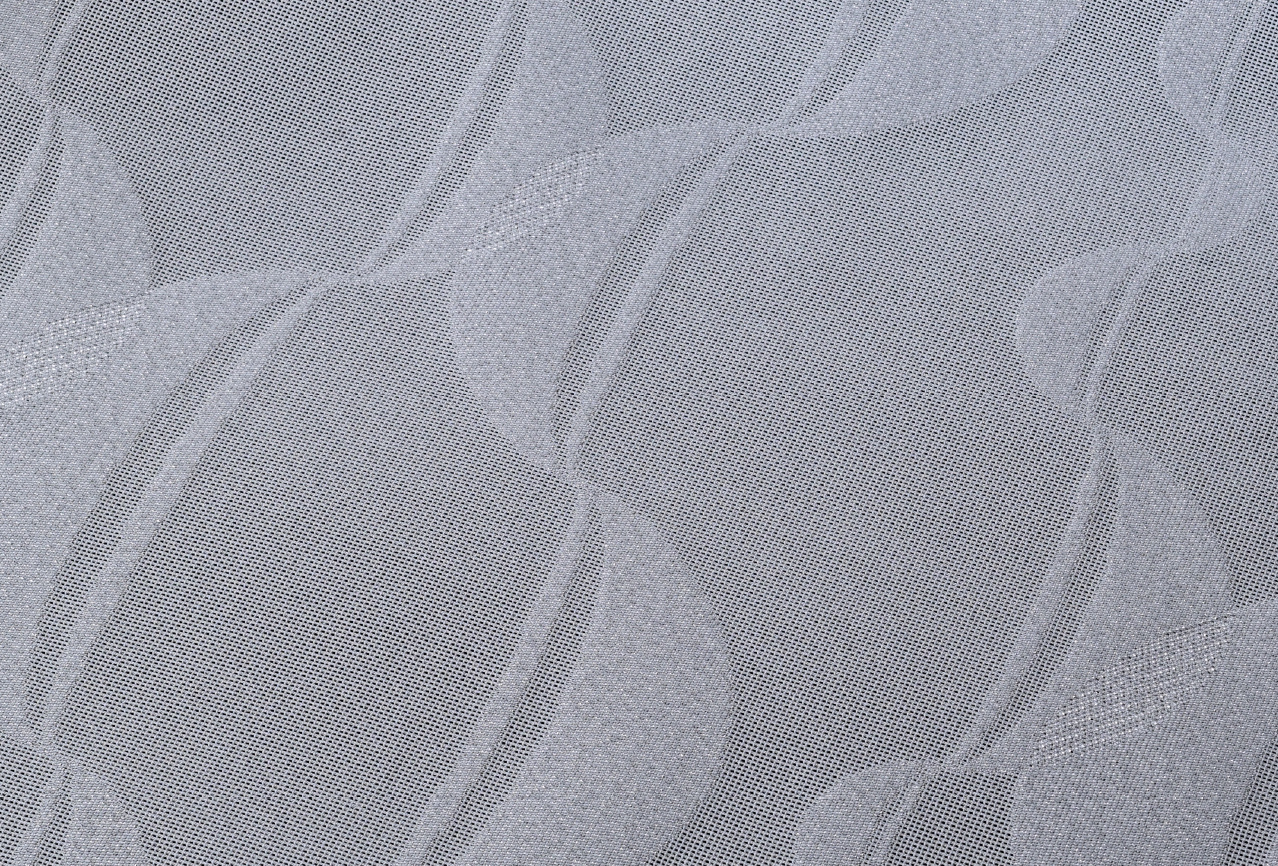 7
7
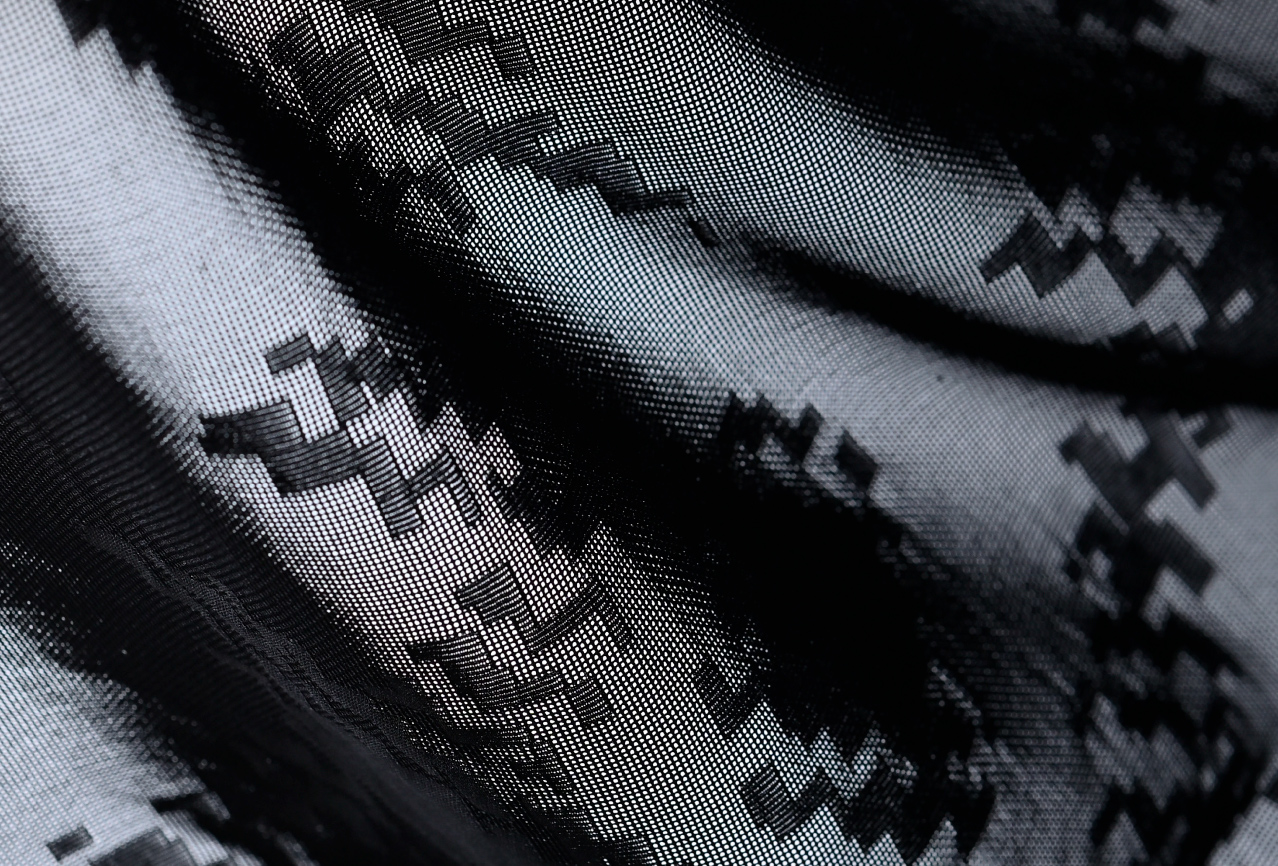 8
8
「からみ織り」で織られる絽や紗は、透けて通気性がよく、耐久性が高いため、夏用きものに加えて、インテリアファブリックとしても活用可能。
- : からみ織り「水面」。
- : からみ織り「モザイク」。
(7,8 すべて安田織物株式会社)
Gauzes obtained by "karami-ori" are transparent, breathable, and highly durable. Suitable for summer kimono or interior fabrics. 7: "Minamo" karami-ori. 8: "Mosaic" karami-ori. (7,8 Yasuda Textile)
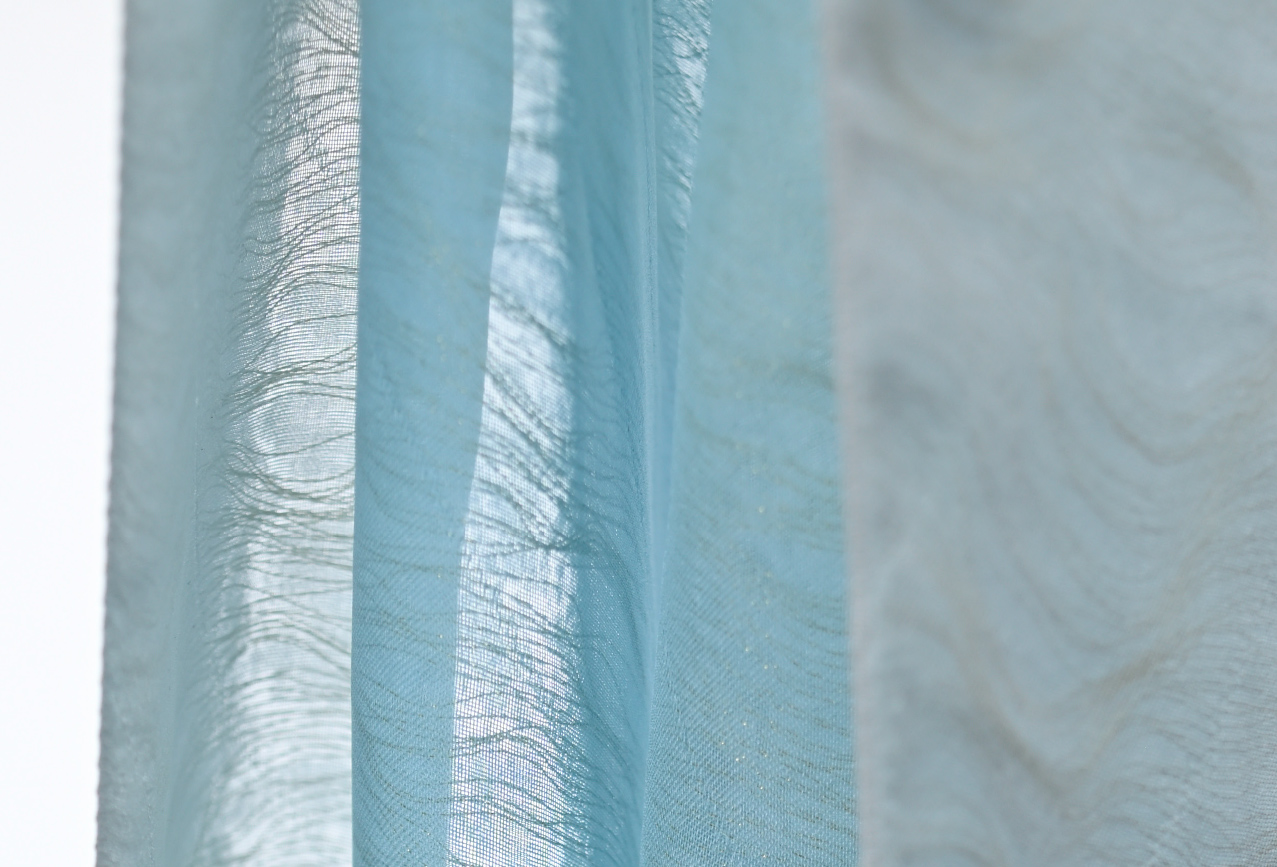 9
9
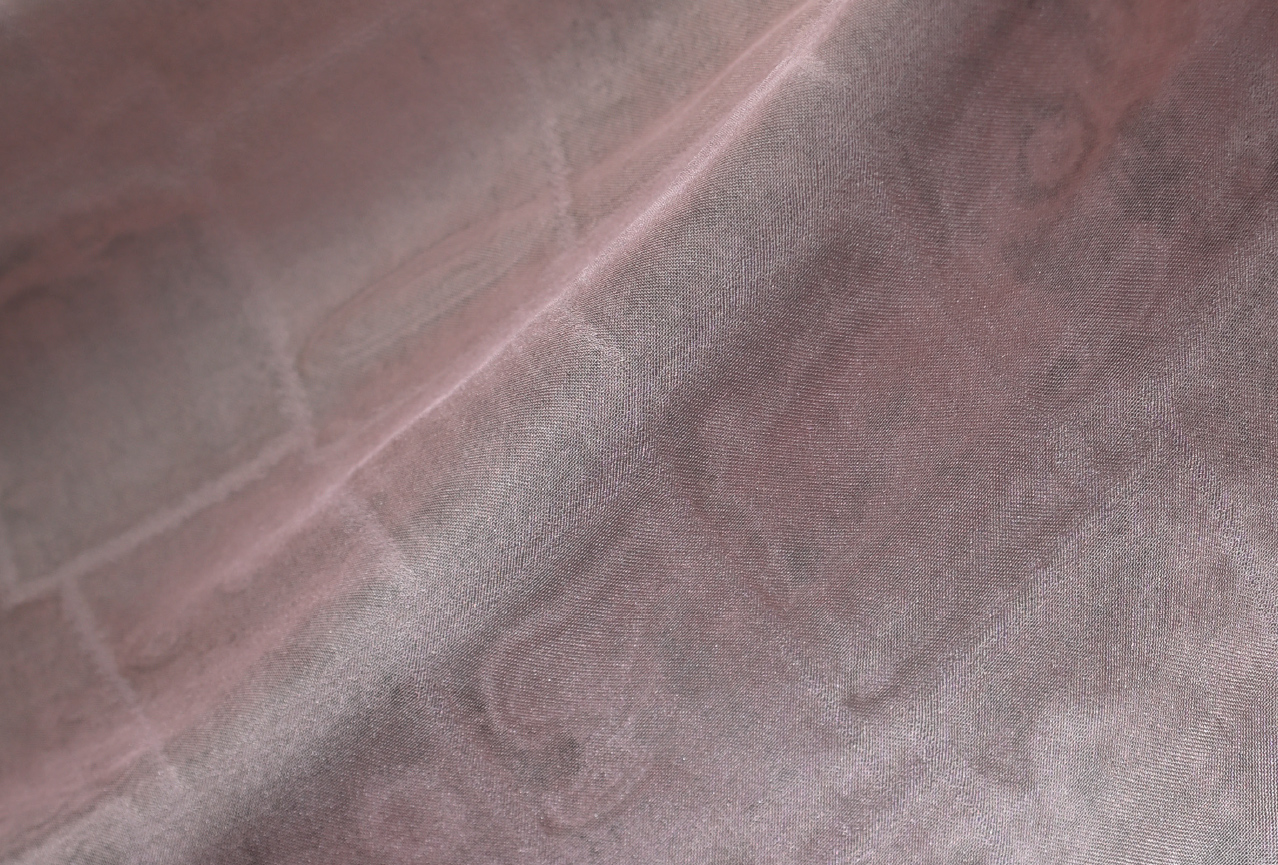 10
10
- : 絹透綾後染めのストール。
- : 絹透綾先染めのストール。どちらも繊細で軽やか。
(9,10 すべて田勇機業株式会社)
9: Thin silk stole after dyeing. 10: Thin silk stall before dyeing. Both are elegant. (9,10 Tayū)
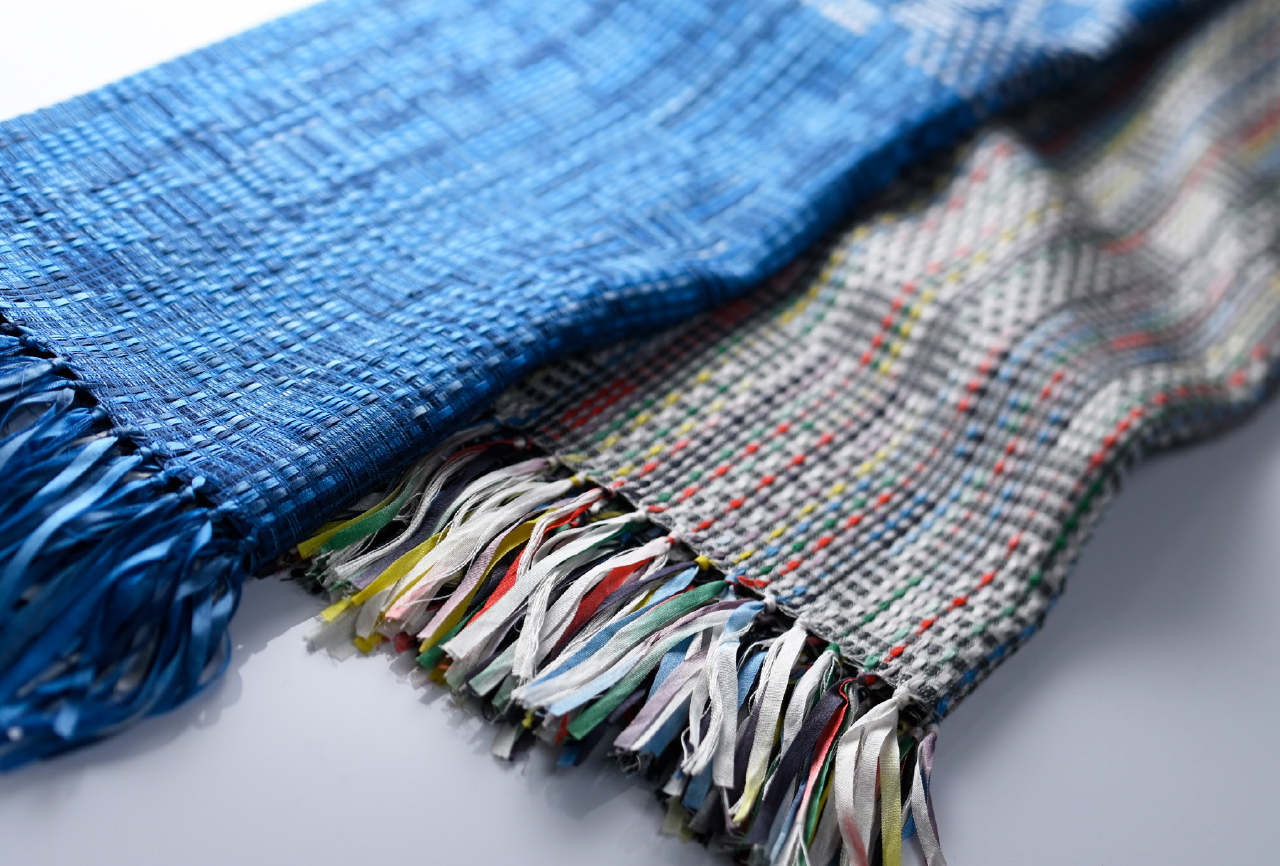 11
11
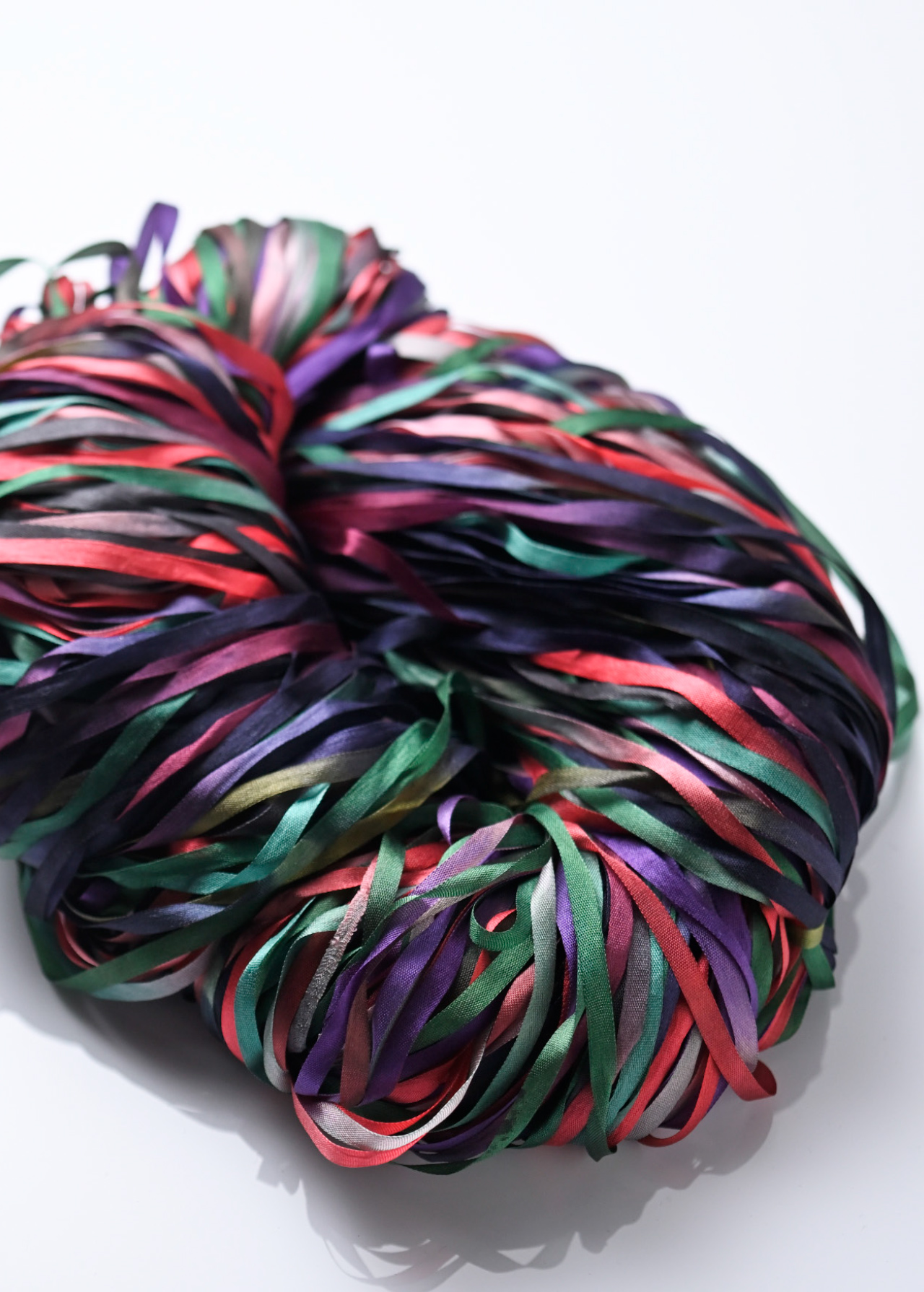 12
12
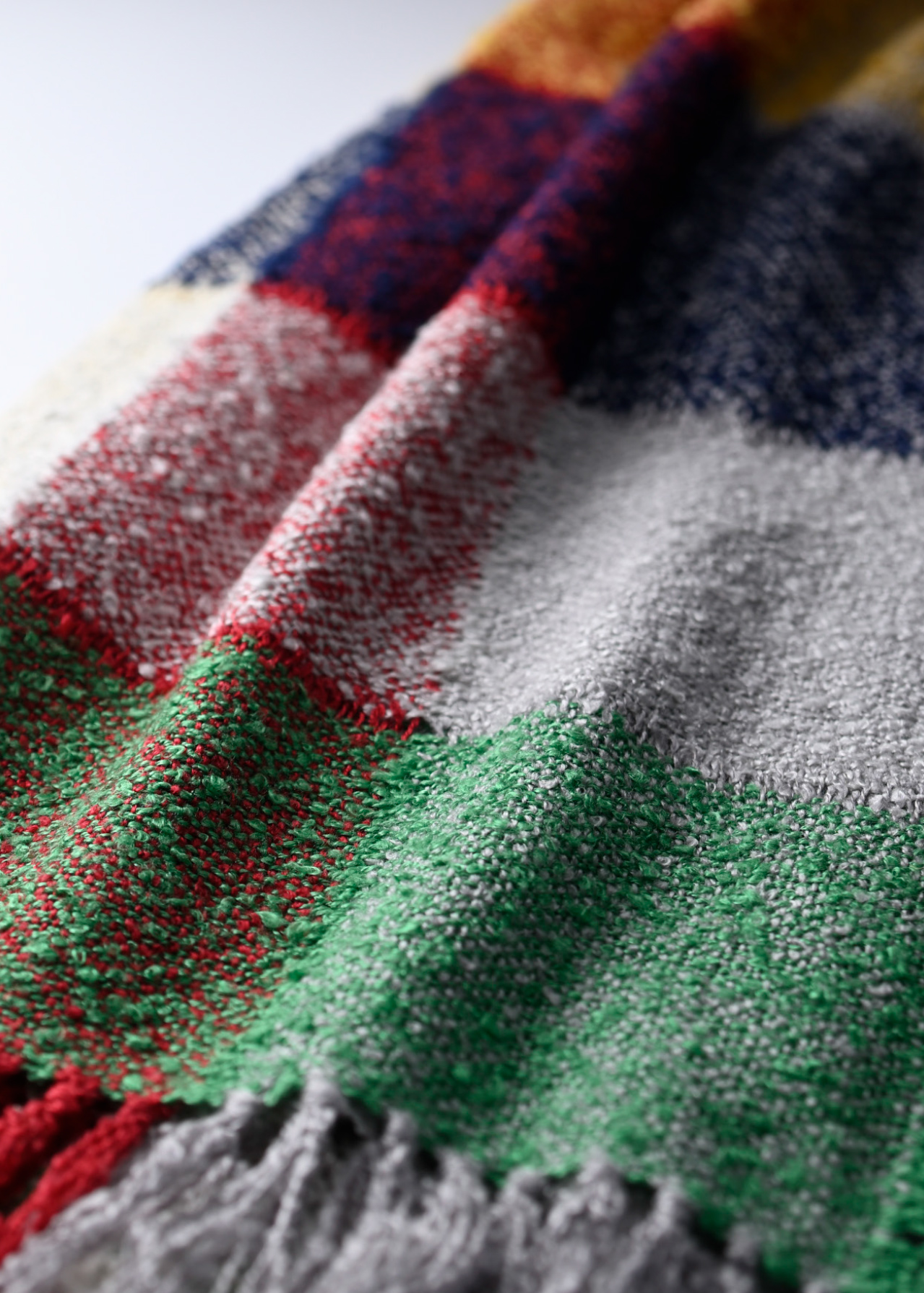 13
13
- : リボンヤーンを織ったストール。
- : リボンヤーン。
- : 絹真綿で織られたストール。
(11,12,13 すべて創作工房糸あそび)
11: Stole woven with ribbon yarn. 12: Ribbon yarn. 13: Stole woven with floss silk. (11,12,13 creative workshop ITO ASOBI)
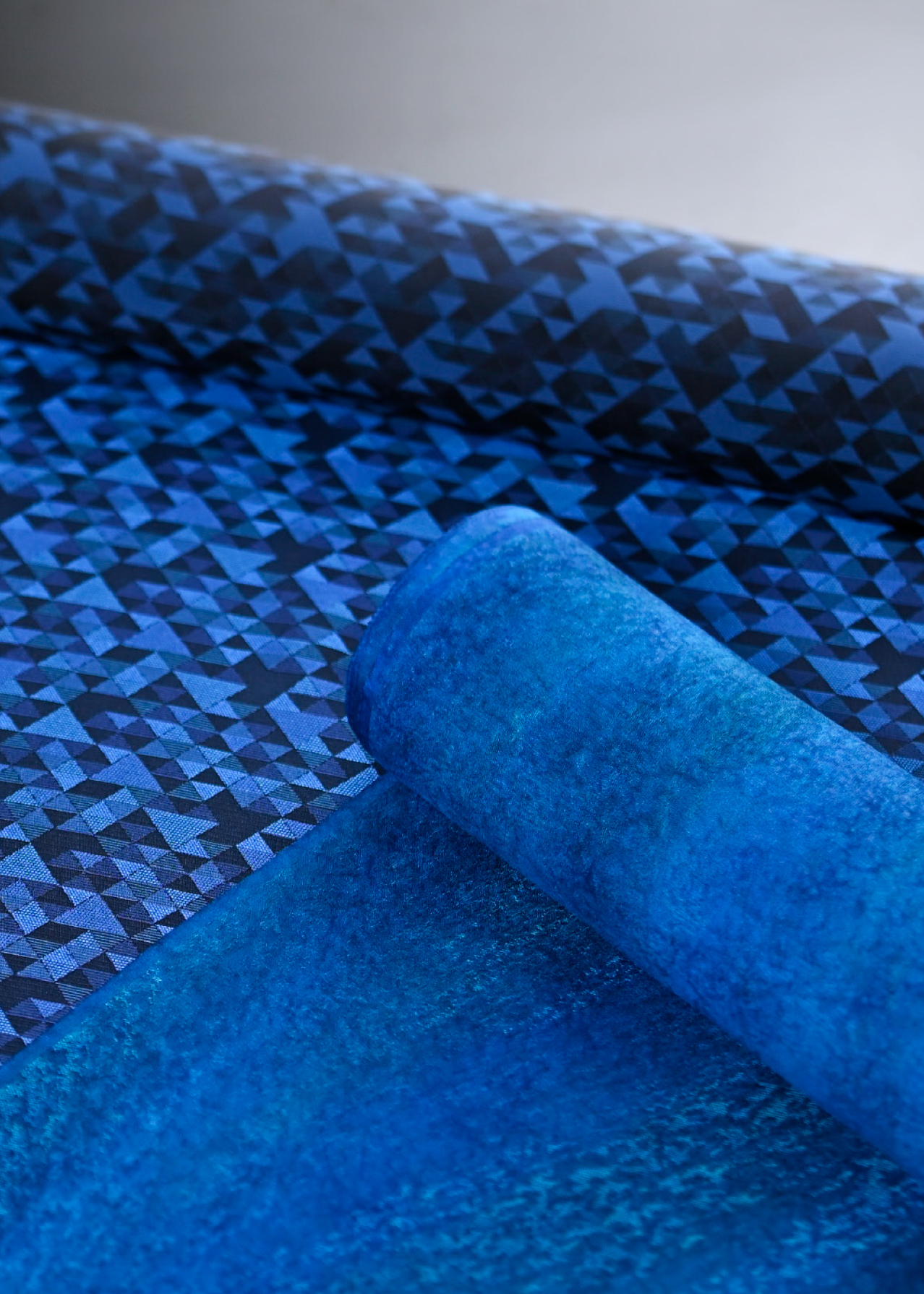 14
14
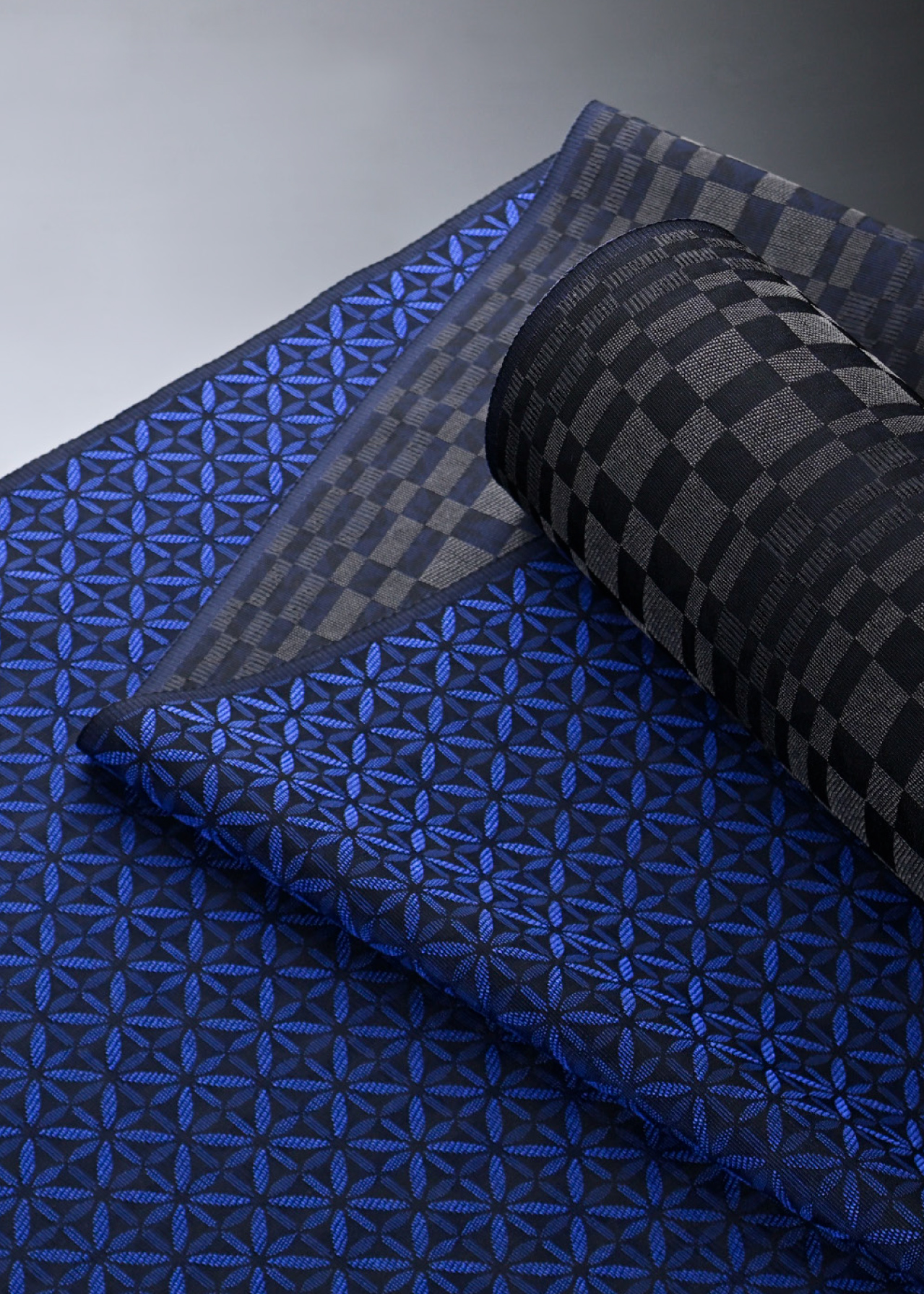 15
15
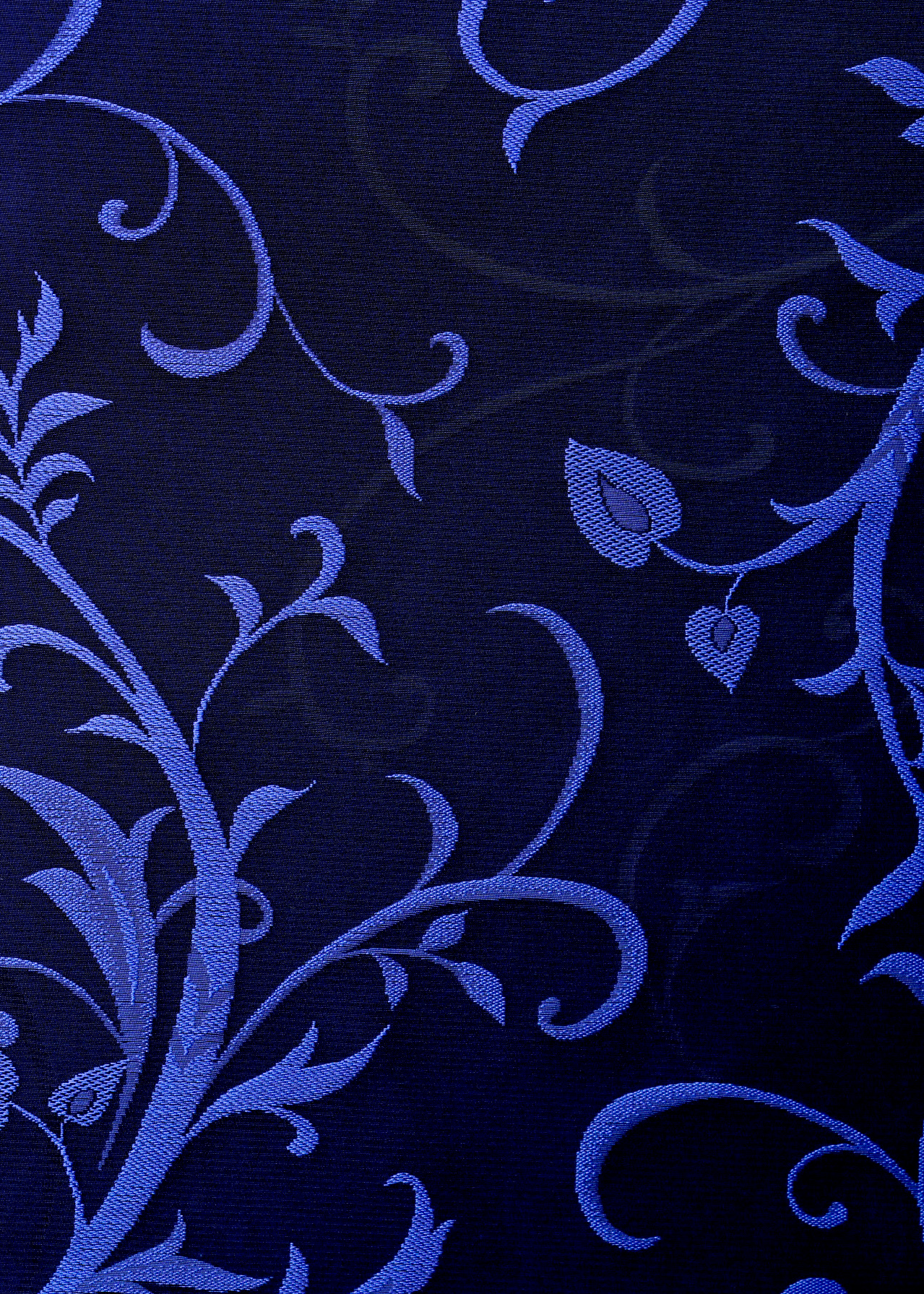 16
16
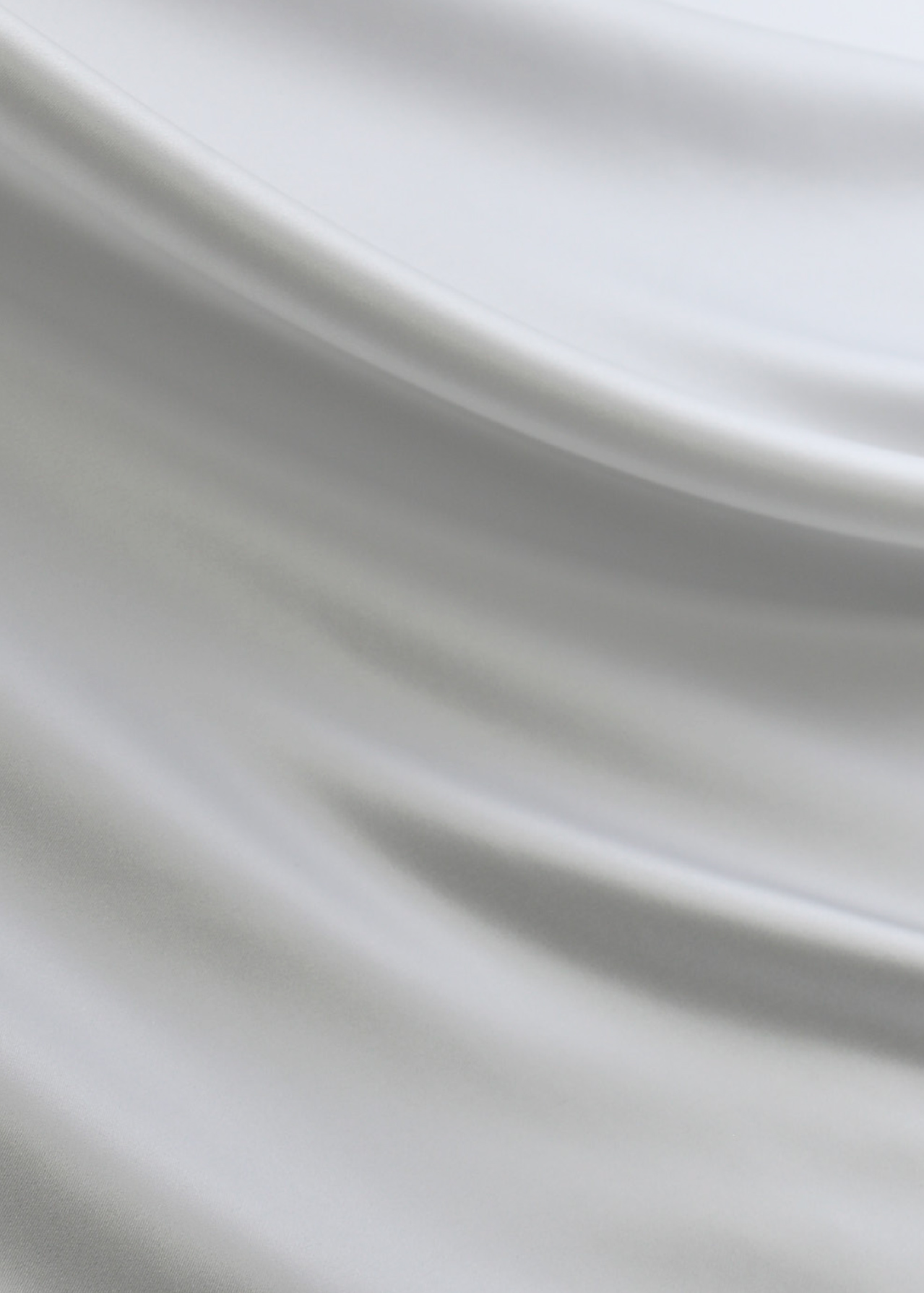 17
17
14,15,16. : シルクジャカード。きもの用の着尺だけでなく、120cmの広幅の生地も織られている。
17. : 精錬と織りの組み合わせにより、シルク100%のストレッチ素材も開発されている。
(14,15,16,17 すべて江原産業株式会社)
14,15,16: Silk Jacquard. Not only the kimono size, but also 120cm wide cloth is woven. 17: Stretch materials made of 100% silk have also been developed by combining refining and weaving. (14,15,16,17 Ebara Sangyō)
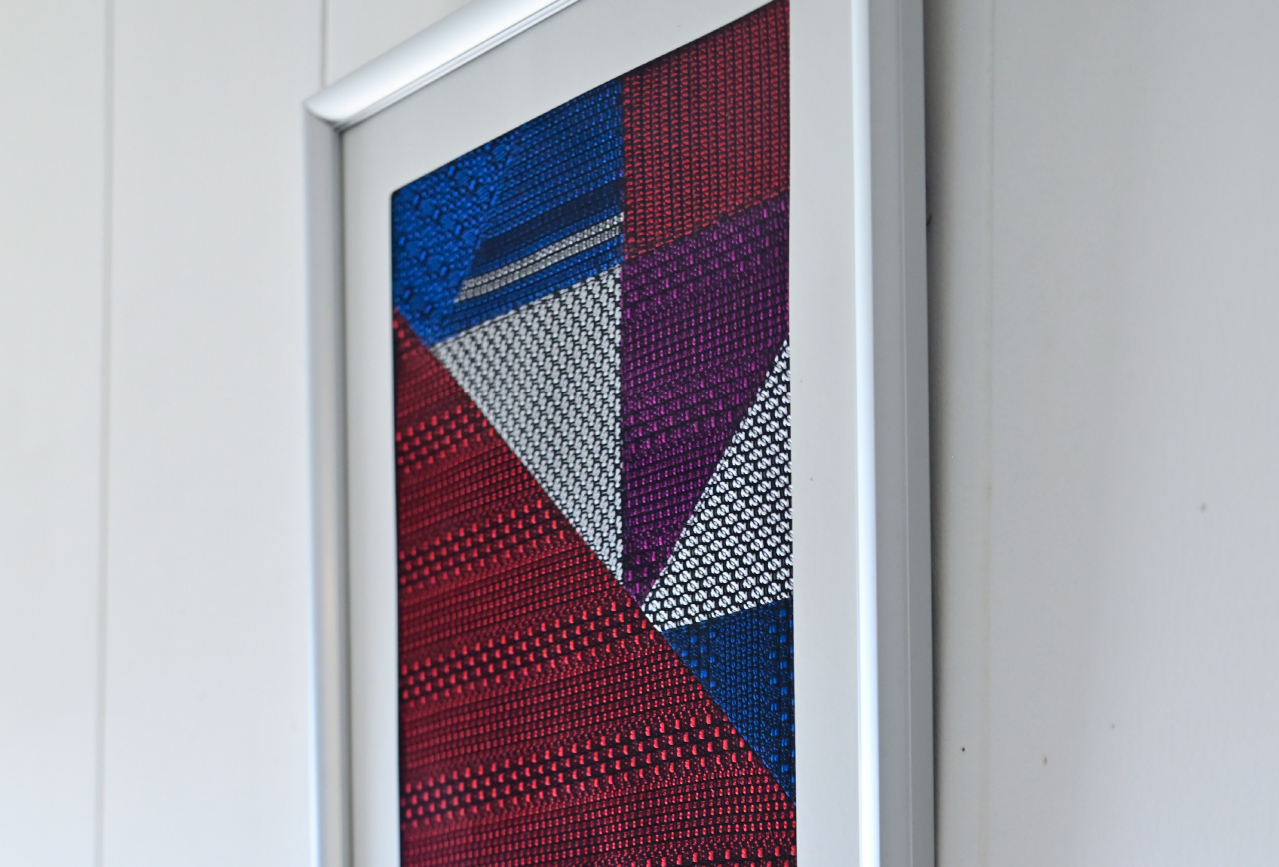 18
18
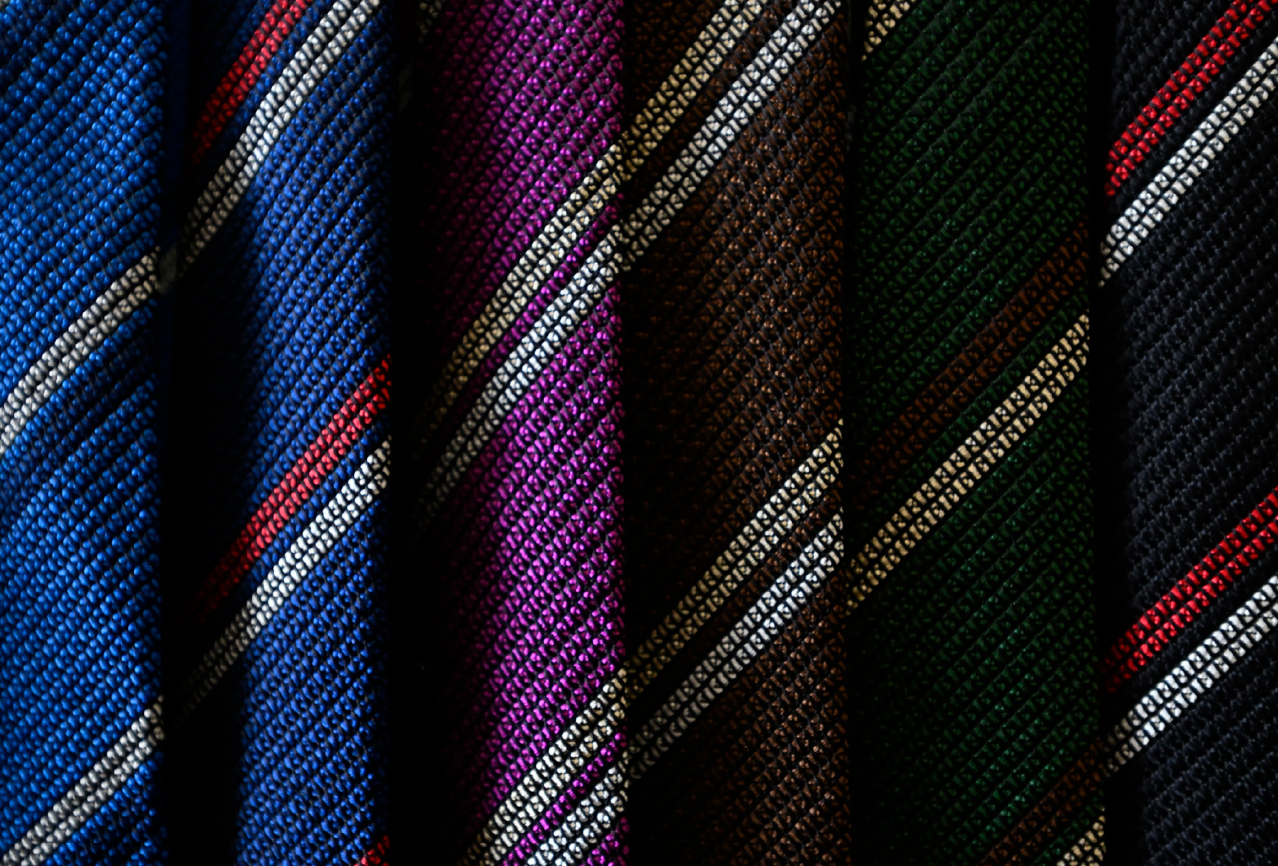 19
19
- : 手織り機で織ったネクタイ地をコラージュしたパネル。
- : 丹後に伝わる織りの伝統を継承した、世界でも珍しい手織り機で織られたネクタイ。しなやかで締めやすいと評判だ。
(18,19 すべてクスカ株式会社)
18: A collage panel of ties woven with a hand-loom. 19: A tie woven by a hand-loom, inheriting the tradition of weaving handed down in Tango. It is supple and easy to tighten. (18,19 KUSKA)

